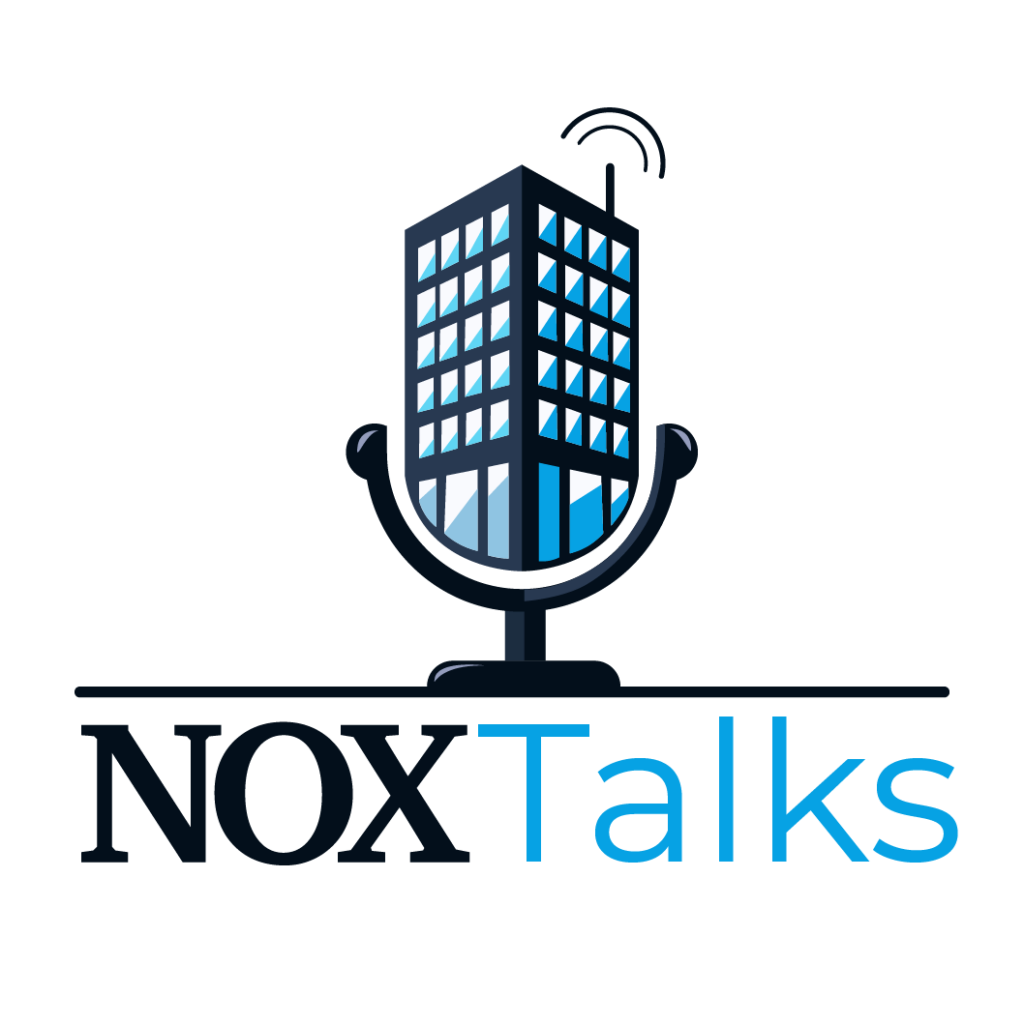The smart building industry has reached a critical inflection point. While traditional key performance indicators (KPIs) like energy efficiency and system uptime remain important, they no longer distinguish truly intelligent buildings from merely automated ones. Progressive building engineers, facility managers, and property owners are discovering that the next generation of success metrics goes far beyond operational efficiency—they measure human potential, environmental responsiveness, and systemic intelligence.
Hate to read? Listen to a podcast episode on this topic. Visit the NOXTalks Podcast for more episodes

The Evolution Beyond Traditional Metrics
Energy savings and uptime percentages have become table stakes in today’s smart building landscape. The global Smart Buildings Market size is expected to reach USD 76.8 billion from 2025-2029, expanding at a CAGR of 11.3% during the forecast period (Technavio, 2024). This explosive growth indicates that competition is intensifying, and differentiation requires more sophisticated measures of building performance.
Traditional metrics served their purpose during the early adoption phase of building automation systems. They provided clear, quantifiable returns on investment and helped justify the initial capital expenditure for smart building technologies. However, as these systems have matured and become more widespread, facility managers are realizing that energy efficiency alone doesn’t capture the full value proposition of intelligent buildings.
Wellness Indices: The Human-Centric Revolution
The most significant shift in smart building metrics centers on occupant wellness and productivity. The WELL Building Standard has emerged as a pioneering framework that moves beyond environmental performance to measure human health outcomes. WELL is a performance-based system for measuring, certifying, and monitoring features of the built environment that impact human health and well-being. (WELL Building Standard, 2024).
Modern wellness indices incorporate sophisticated measurements across multiple domains. The framework revolves around 10 key concepts – air, water, nourishment, light, movement, thermal comfort, sound, materials, mind, and community (WELL Certified, 2024). These metrics go far beyond simple temperature and humidity readings to include circadian lighting effectiveness, acoustic comfort scores, biophilic design integration, and even community interaction facilitation.

Recent research validates the impact of these wellness-focused metrics. In 2024, researchers used a statistical matching approach to compare occupant satisfaction from 3,268 surveys from 20 WELL-certified and 49 LEED-certified buildings. Overall building and workplace satisfaction was found to be high in WELL-certified buildings (94% and 87%) (Scientific Reports, 2024). This data demonstrates that wellness-focused metrics correlate with measurable occupant outcomes.
The business case for wellness indices is compelling. Improved air quality, people-centric design, and access to different kinds of facilities can be significant factors contributing to reduced absenteeism and increased workplace productivity (uHoo, 2024). Property owners are discovering that buildings optimized for human wellness command premium rents and experience lower tenant turnover rates.
Adaptive Load Scores: Intelligence in Action
One of the most sophisticated emerging areas of measurement focuses on adaptive building performance, which evaluates a building’s ability to respond intelligently to changing conditions while optimizing multiple objectives simultaneously. While there isn’t yet a universally standardized “adaptive load score,” progressive building teams are developing custom metrics that capture this intelligent responsiveness.
The concept of adaptability in smart buildings—defined as the ability to learn, predict and satisfy the needs of users and respond to external environmental stresses (ScienceDirect, 2020)—represents a fundamental shift from reactive building management to predictive, intelligent systems that anticipate and prevent issues before they impact occupants.
Leading facilities are tracking various sub-metrics that collectively measure adaptive performance: predictive accuracy rates for occupancy and environmental conditions, system response times to changing demands, energy optimization under variable loads, and the building’s ability to maintain performance during peak usage periods. While these aren’t yet consolidated into a single standardized score, they represent the direction the industry is heading toward more intelligent performance measurement.
Data Management Maturity: The Foundation of Intelligence
The infrastructure supporting these advanced metrics has also evolved significantly. Data management systems have gained traction, with global scores rising from 63% in 2021 to 77% in 2024 (WiredScore, 2025). This improvement in data management capabilities enables more sophisticated analysis and real-time optimization across building systems.
Effective data management allows building teams to track complex, interrelated metrics that would have been impossible to monitor with earlier generations of building automation systems. The ability to correlate occupant behavior patterns with environmental conditions, energy consumption, and wellness outcomes creates opportunities for optimization strategies that address multiple objectives simultaneously.

System Integration and User Experience Metrics
Modern smart buildings are increasingly evaluated on their ability to facilitate seamless integration across systems and enhance user experience. While specific standardized metrics for “interactivity” are still emerging, building teams are developing innovative ways to measure how effectively their facilities support collaboration, adapt to diverse work styles, and respond to changing organizational needs.
These evolving metrics often include system interoperability assessments, user interface effectiveness ratings, and cross-platform data sharing efficiency measures. The focus is on creating buildings that don’t just automate functions, but actively enhance the human experience within the space.
The Future Landscape of Building Performance
As the industry continues to evolve, successful building teams are moving beyond single-metric optimization toward holistic performance dashboards that balance multiple objectives. The most advanced facilities now track dozens of metrics across categories including occupant wellness, environmental adaptability, predictive accuracy, energy optimization, and social impact.
This transition requires building professionals to develop new competencies in data analysis, occupant psychology, and systems thinking. Facility managers must become fluent in wellness science, while building engineers need to understand behavioral economics and predictive analytics.
The buildings that thrive in this new landscape will be those that can demonstrate measurable improvements in human potential, environmental responsiveness, and operational intelligence. Traditional metrics remain important, but they now serve as the foundation for more sophisticated measures of building performance that reflect the true potential of intelligent built environments.
As the smart building market continues its rapid expansion, the organizations that embrace these next-level metrics will find themselves better positioned to attract tenants, optimize operations, and create lasting value in an increasingly competitive marketplace.
References:
Kaiterra. (2024). Navigating the WELL Building Standard and Certification: A Cheat Sheet. https://learn.kaiterra.com/en/resources/navigating-the-well-building-standard-and-certification-a-cheat-sheet
Scientific Reports. (2024). Occupant satisfaction comparison between WELL-certified and LEED-certified buildings. https://www.nature.com/articles/s41598-024-65768-w
ScienceDirect. (2020). Smart building adaptability and indoor environmental quality. https://www.sciencedirect.com/science/article/abs/pii/S2210670720305497
Technavio. (2024). Smart Buildings Market – Industry Analysis, Size, Share, Growth, Trends, and Forecast 2025-2029. https://www.technavio.com/report/smart-buildings-market-industry-analysis
uHoo. (2024). Investing in Well-being: Why Pursue WELL Building Standard Certification? https://getuhoo.com/blog/business/investing-in-well-being-why-pursue-well-building-standard-certification/
WELL Building Standard. (2024). WELL v2 Framework. https://standard.wellcertified.com/well
WELL Certified. (2024). WELL Building Standard Overview. https://well.support
WiredScore. (2025). Key Trends from WiredScore Insights 2025. https://www.builtenvironmentme.com/news/property-management/key-trends-from-wiredscore-insights-2025

